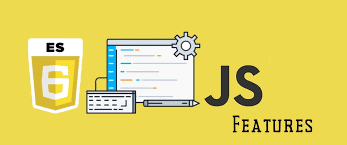What Is JavaScript?
JS is the spark that brings websites to life. It’s a versatile programming language that runs in your browser, transforming static HTML pages into interactive masterpieces. Think of it as the director of a play, telling buttons when to glow, forms when to validate, and animations when to dance. From e-commerce sites like Amazon to streaming giants like Netflix, JavaScript powers the web’s interactivity.
But it’s not just for websites. JS is used in mobile apps, server-side development, and even games. Its flexibility makes it a favorite for developers of all ages, from kids coding their first game to seniors building a portfolio site. In 2025, JS remains the most popular programming language, used by over 17 million developers worldwide, according to Stack Overflow’s 2024 Developer Survey.
A Brief History of JS
JS was born in 1995, created by Brendan Eich at Netscape. Originally called “Mocha” (yes, like your favorite latte), it was later renamed “LiveScript” before settling on “JavaScript” to ride the wave of Java’s popularity. Fun fact: it was developed in just 10 days! Despite its rushed start, JS became standardized as ECMAScript, with updates like ES6 (2015) and ES2023 adding powerful features. Today, it’s the backbone of modern web development.
Why JavaScript Matters in 2025
Why is JS still king? It’s everywhere. In 2025, 98% of websites use JS for client-side scripting, per W3Techs. It powers interactive features like real-time chat, dynamic forms, and smooth animations. Plus, with tools like Node.js, JS now runs servers, making it a full-stack powerhouse. Whether you’re building a blog, a game, or an app, JS is your Swiss Army knife.
Read more: What Is PHP and Its Future Best in 2025
JavaScript vs. Other Languages
JavaScript often gets compared to languages like Python or Java. Here’s a quick breakdown:
|
Language |
Best For |
Learning Curve |
|---|---|---|
|
JavaScript |
Web interactivity, apps |
Moderate |
|
Python |
Data science, automation |
Beginner-friendly |
|
Java |
Enterprise apps, Android |
Steep |
Unlike Python’s focus on simplicity or Java’s rigid structure, JS shines in flexibility, making it ideal for web and app development.
JS Basics for Beginners
Ready to code? JS is like a box of LEGO bricks—simple pieces that build epic creations. Let’s start with the basics, perfect for beginners of all ages.
Variables and Data Types
Variables are containers for storing data, like labeled jars in your kitchen. JS has several data types:
-
Strings: Text, like “Hello, World!”
-
Numbers: Integers or decimals, like 42 or 3.14
-
Booleans: true or false
-
Arrays: Lists, like [“apple”, “banana”, “orange”]
-
Objects: Key-value pairs, like {name: “Grok”, age: 25}
Here’s a simple example:
let name = "Grok"; // String
let age = 25; // Number
let isCool = true; // Boolean
console.log(`Hi, I’m ${name}, I’m ${age}, and I’m ${isCool ? "cool" : "not cool"}!`);This code prints a personalized greeting. Try it in your browser’s console!

Functions: Your Code’s Superpower
Functions are reusable code blocks, like recipes you can whip up anytime. They take inputs, process them, and return outputs. Here’s a basic function:
function greet(name) {
return `Hello, ${name}! Welcome to JavaScript!`;
}
console.log(greet("Reader")); // Outputs: Hello, Reader! Welcome to JavaScript!Functions save time and make your code cleaner. You can call them whenever you need, like casting a spell.
Loops and Conditionals
Loops repeat tasks, and conditionals make decisions. Imagine you’re sorting candy—loops check each piece, and conditionals decide which pile it goes in. Here’s an example:
for (let i = 1; i <= 10; i++) {
if (i % 2 === 0) {
console.log(`${i} is even!`);
} else {
console.log(`${i} is odd!`);
}
}This code loops through numbers 1 to 10, checking if each is even or odd. Loops and conditionals are your coding bread and butter.
Working with Arrays
Arrays are like shopping lists, holding multiple items. You can add, remove, or modify items easily:
let fruits = ["apple", "banana", "orange"];
fruits.push("grape"); // Add grape
console.log(fruits[1]); // Outputs: banana
console.log(fruits.length); // Outputs: 4Arrays are perfect for storing data like user inputs or game scores.
Intermediate JavaScript Concepts
Feeling confident? Let’s level up with intermediate concepts that add flair to your code.
DOM Manipulation Magic
The Document Object Model (DOM) is your website’s blueprint. JavaScript lets you tweak it like a digital sculptor. Want to change a button’s text or hide an element? Here’s how:
document.getElementById("myButton").innerText = "Click Me Now!";
document.getElementById("myDiv").style.display = "none";This code updates a button’s text and hides a div. It’s like redecorating a webpage in real-time!
Event Handling Made Easy
Events are user actions, like clicks, keypresses, or mouse hovers. JavaScript listens for them to make your site interactive:
document.getElementById("myButton").addEventListener("click", () => {
alert("You clicked the button! Let’s celebrate!");
});This code shows an alert when a button is clicked. Events are the secret sauce of interactive websites.
JavaScript and APIs
APIs let your code talk to external services, like fetching weather data or movie info. Here’s a simple API call:
fetch("https://api.example.com/movies")
.then(response => response.json())
.then(data => console.log(data))
.catch(error => console.error("Oops, something broke!", error));This code grabs movie data from an API. APIs make your projects dynamic and data-rich.
Advanced JavaScript Techniques
Ready to become a JavaScript rockstar? These advanced topics will elevate your skills.
Async JavaScript: Promises & More
Asynchronous JavaScript handles tasks like API calls without freezing your app. Promises are like IOUs for data:
fetch("https://api.example.com/data")
.then(response => response.json())
.then(data => console.log(data))
.catch(error => console.error("Oops!", error));For cleaner code, use async/await:
async function getData() {
try {
let response = await fetch("https://api.example.com/data");
let data = await response.json();
console.log(data);
} catch (error) {
console.error("Something went wrong!", error);
}
}Async/await makes your code read like a story, not a puzzle.
JavaScript Frameworks Overview
Frameworks like React, Vue, and Angular streamline development. Here’s a detailed comparison:
|
Framework |
Pros |
Cons |
Best For |
|---|---|---|---|
|
React |
Flexible, huge community |
Steep learning curve |
Dynamic web apps |
|
Vue |
Lightweight, beginner-friendly |
Smaller ecosystem |
Small to medium projects |
|
Angular |
Full-featured, enterprise-ready |
Complex setup |
Large-scale applications |
React, for example, uses components to build reusable UI pieces:
function Welcome() {
return <h1>Hello, JavaScript World!</h1>;
}Modules and Code Organization
As projects grow, organization is key. JavaScript modules let you split code into reusable files:
// math.js
export function add(a, b) {
return a + b;
}
// main.js
import { add } from './math.js';
console.log(add(2, 3)); // Outputs: 5Modules keep your code tidy and scalable, like organizing your closet.
JS in the Real World
JavaScript isn’t just code—it’s everywhere, powering real-world applications.
Building Interactive Websites
From e-commerce checkouts to live chat widgets, JavaScript makes websites engaging. Ever added an item to your cart on Amazon? That’s JavaScript handling the update in real-time.
JS in Mobile Apps
With frameworks like React Native, JS builds cross-platform mobile apps. Your favorite fitness tracker or social media app might be a JavaScript creation!
Server-Side JS with Node.js
Node.js lets JS run servers, powering backends for apps like Netflix. Here’s a simple Node.js server:
const http = require('http');
http.createServer((req, res) => {
res.writeHead(200, {'Content-Type': 'text/plain'});
res.end('Hello, Node.js!');
}).listen(3000);This code runs a server at localhost:3000. Cool, right?
Read more: Learn JavaScript
JS in Game Development
JavaScript powers browser games with libraries like Phaser. Want to build a 2D platformer? Phaser’s got you covered:
const config = {
type: Phaser.AUTO,
width: 800,
height: 600,
scene: {
preload: preload,
create: create,
update: update
}
};
const game = new Phaser.Game(config);

Tips for Learning JavaScript
Mastering JS is like learning to ride a bike—start slow, keep practicing, and enjoy the ride. Here’s how to succeed:
Best Resources for Beginners
-
freeCodeCamp: Free, interactive tutorials.
-
MDN Web Docs: The ultimate JS reference.
-
CodePen: Experiment with code and see others’ work.
-
YouTube Channels: Channels like Traversy Media offer visual lessons.
Building Your First Project
Start with simple projects:
-
To-Do List: Practice DOM manipulation and events.
-
Calculator: Work with functions and user input.
-
Weather App: Use APIs to fetch real-time data.
Here’s a basic to-do list code:
function addTask() {
let task = document.getElementById("taskInput").value;
let list = document.getElementById("taskList");
let li = document.createElement("li");
li.innerText = task;
list.appendChild(li);
}Joining the JS Community
Connect with coders on:
-
X: Follow #JS for tips and trends.
-
Reddit: Join r/learn js for advice.
-
Discord: Find coding servers for real-time help.
Common JS Mistakes to Avoid
Even pros slip up! Here are pitfalls to dodge:
-
Forgetting Semicolons: JavaScript’s automatic semicolon insertion can be tricky. Always add ;.
-
Misusing var: Use let or const for better scope control.
-
Ignoring Errors: Check the console for bugs—don’t ignore them!
-
Overcomplicating Code: Keep it simple. Avoid nested loops when a map will do.
-
Not Testing: Test your code on different browsers to catch quirks.
Read more: JavaScript: A Beginner’s Guide to Programming Magic
FAQs About JavaScript
What is JS used for?
JS powers web interactivity, like forms, animations, and real-time updates. It’s also used in mobile apps, server-side development with Node.js, and games, making it a versatile tool for coders of all ages.
Is JS hard to learn?
JS is approachable, with a moderate learning curve. Beginners can master basics like variables and loops in a few months with daily practice. Resources like freeCodeCamp and MDN make it fun and manageable.
Can kids learn JavaScript?
Yes! Kids as young as 8 can learn JavaScript through platforms like Code.org or Scratch, which use games and animations to teach coding concepts, making it engaging and accessible for young learners.
What’s the difference between Java and JavaScript?
Java is a general-purpose language for apps and Android, while JavaScript focuses on web interactivity. Java’s like a sturdy coffee bean; JavaScript’s the caffeine powering dynamic webpages.
How long does it take to learn JavaScript?
With consistent practice, beginners can learn JavaScript basics in 3–6 months. Building projects like a to-do list or calculator accelerates learning, while advanced skills take 1–2 years.
Conclusion
JS is the heartbeat of the modern web, powering 98% of websites in 2025 and beyond. From its quirky 10-day creation in 1995 to its role in apps, games, and servers, it’s a language for everyone—kids, adults, and seniors. Whether you’re crafting a website, building an app, or just having fun, JavaScript’s versatility is unmatched. Start with small projects, leverage free resources, and join the vibrant coding community. Ready to unleash your inner coder? Share your JS journey in the comments and let’s build something amazing together!

